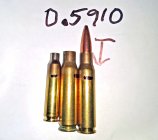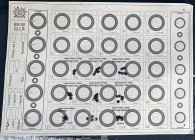I like your post. I was involved with qualifying to specs ASTM, MIL, aerospace and NAVSEA 250 Nuclear (Nuclear welds) for many years. Plus, failure analysis. I was recognized as being very good at some types of failure analysis. Some of the info put out on this website doesn’t make sense.
- 450-500F recrystallization starts. Published data refutes this. The proper charts have been put on this website several times and people ignore real data.
- Who came up with 750F as some great temp to shoot for?
- Amps suggest some ideal hardness to shoot for. This may be fine but it implies that if you are a little harder or softer you won’t achieve good results on the target.
- I still see people saying cartridge brass hardens with time, it doesn’t.
- Some guys still think you have to water quench.
- A PHD metallurgist engineer I worked with who later became a consultant to the copper industry told me 1050F was red. Different degrees of red?
Annealing brass isn’t that complicated. After about ten years with a torch, I have shortened my annealing from 9 seconds to 5. It’s probably stress relieved and not annealed. I don’t care. I am happy with the case life and results on the target. A lot of guys on this website that don’t have any back ground in metallurgy are explaining what’s going on after reading someone else’s technical article.
Many times I have thought about leaving this website but I have not. I can solve the small problems that come up myself. Never had 95% of the problems people on this website have. There must be 5000 post and replies on how to anneal and how to lube a case.














